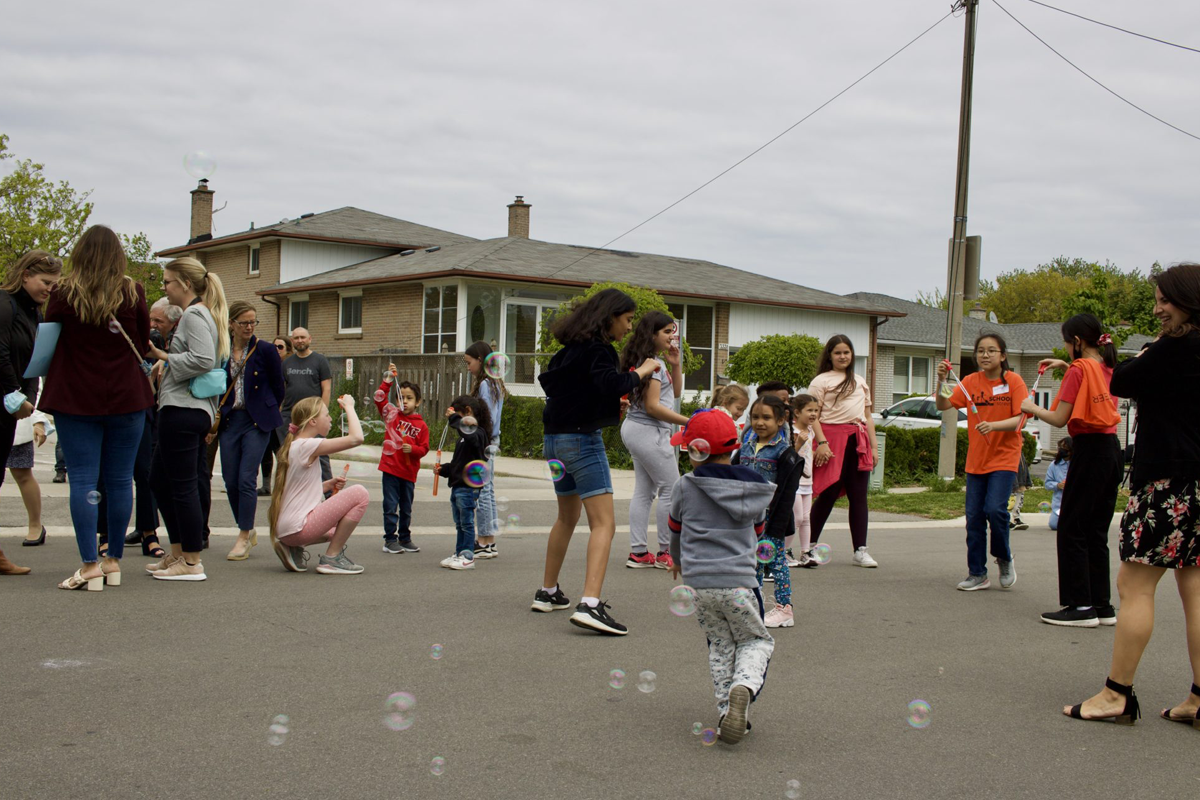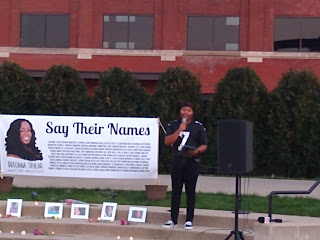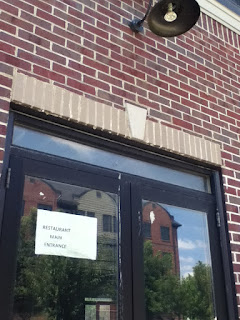 |
| (Source: fpccr.org. Used without permission.) |
I
Are there moral imperatives in local economic development policy? In August I will be speaking to First Presbyterian Church about this very topic. First Presbyterian has also asked presenters in this series to consider the question: "What role does economic inequality play in causing positive changes?" I could, I suppose, stick to summarizing some of the issues and policy options, and let the Presbyterians make their own moral connections, but where would be the sport in that?
As I wrote in 2013, the Bible, particularly the Christian Bible (a.k.a. the New Testament), has very little to say about the city as an institution. The earliest Christians were far from the seats of power, and neither Jesus nor Paul nor any of their comrades have much to say on the subject of social, political or economic arrangements. Though the fellowship of the earliest Christians is intriguing to ponder (see Acts 2:42-47), probably the best New Testament description of a fully-fledged city is the New Jerusalem in the Book of Revelation:
Then he said to me, "It is done! I am the Alpha and the Omega, the Beginning and the End. To the thirsty I will give water as a gift from the spring of the water of life. Those who conquer will inherit these things, and I will be their God, and they will be my children. But as for the cowardly, the faithless, the polluted, the murderers, the sexually immoral, the sorcerers, the idolaters, and all liars, their place will be in the lake that burns with fire and sulfur, which is the second death. (Rev 21:6-8, NRSV)
 |
Darveza Gas Crater, Turkmenistan
(Wikipedia Creative Commons) |
It is difficult to find lessons for today's earthly city in John's post-apocalyptic vision, particularly if the city's infrastructure does not include a lake that burns with fire and sulfur. If God provides for all immediate material and emotional needs, while anyone who doesn't fit in--that's quite the list, is it not?--is sent off to second death, it definitely simplifies much of the planner's job. The everyday citizen would need to be watching every step, though! The implications for city building of verse 8 (and, indeed, the vaster part of the preceding 20 chapters) are alarming. The Book of Revelation has its devoted following, but I am not among them.
So for spiritual guidance on urban matters I find myself turning to the Hebrew Bible. The people of Israel were self-governing for most of the time period it covers. And God has some things to say about governing in the course of these 39 books, including this version of the New Jerusalem spoken by the prophet Zechariah:
Thus says the Lord: I will return to Zion and will dwell in the midst of Jerusalem; Jerusalem shall be called the faithful city, and the mountain of the Lord of hosts shall be called the holy mountain. Thus says the Lord of hosts: Old men and old women shall again sit in the streets of Jerusalem, each with staff in hand because of their great age. And the streets of the city shall be full of boys and girls playing in the streets. Thus says the Lord of hosts: Even though it seems impossible to the remnant of this people in these days, should it also seem impossible to me, says the Lord of hosts? Thus says the Lord of hosts: I will save my people from the east country and from the west country, and I will bring them to live in Jerusalem. They shall be my people and I will be their God, in faithfulness and in righteousness. (Zech 8:2-8, NRSV)
 |
Boys and girls playing in the streets: Mississauga School Streets Project
(Swiped from 880cities.org. Used without permission.) |
As I read this, Zechariah sounds a lot like Guillermo Penalosa. Gathering people together, with particular concern for 80-year-old "old men and old women" and 8-year-old "boys and girls"--and in other parts of the Scriptures, for widows, orphans, day-laborers, and refugees--it is fair to argue that God cares about both the material well-being of God's people and their opportunities to enjoy life, and is particularly concerned about the weakest and most vulnerable. (See also Isaiah 1-12 esp 1:17, 5:8, and the condemnation of bad use of power in 10:1-4.) To the extent we urbanist-believers have influence in our city we ought to seek to make it prosperous, safe and inclusive. (See the discussion of human thriving, environmental stewardship, and justice in Jacobson 2012: 215-238.)
II
Today cities face age-old questions of how to arrange common social, economic and political life, but while dealing with a novel historical context, including rapid economic change, climate change, uncertain government finances, and huge sunk costs in unproductive suburban development.
Development pattern:
- After World War II a huge wave of residential and commercial development in suburban areas drew white residents and retailers away from central cities. Central city populations became on average older, poorer, and more nonwhite, with lower educational attainment.
- In an auto-centric world, with people and destinations increasingly spread out, it has been difficult to resolve traffic congestion, keep streets in good repair, or supply alternatives like mass transit. Meanwhile, much potentially-productive land in the center of town has been given over to surface parking lots.
 |
| Parking crater, Charlotte city center, June 2023 |
Economy/jobs:
- The industrial era of the American economy ended rather abruptly in the 1970s, with employment shifts away from manufacturing to the broad service sector. Service includes well-remunerated STEM jobs, of course, but also retail and hospitality positions that pay much less well than factory work did. Economic inequality within and between places is as large as it's been in a century (see Piketty 2014).
- Technology has allowed industry and commerce to cross state and national lines to an increasing degree (globalization), offering more choice to consumers, but also creating a winner-take-all economy in which workers and firms and towns have to tread water faster to keep from drowning.
- The mechanization of agriculture has drastically reduced the need for farm labor, which had formed the basis of many small towns. This has led in most cases to shrinking and aging populations while decimating local economies.
- Small business starts, despite encouraging recent data, have been impeded by single-use zoning, development patterns, the difficulty of attaining start-up capital, and the structure of health care and retirement systems.
 |
16th Avenue SW, 2018:
Obsolete big box retail spaces, like industrial sites, blight the landscape |
Other social policy challenges:
- Climate change has brought a variety of weather-related crises, with the threat of more and worse in the future, leading to exponentially increasing refugee flows.
- Housing is in short supply everywhere, especially but not limited to booming metros like Atlanta and Charlotte. Increasing the supply is politically difficult because it threatens the value of existing housing for many families, and is perceived to threaten their quality of life as well.
- Though violent crime decreased dramatically across America between 1990 and 2015, it has since flared up in some places. Police relations with poor and minority populations have been strained by a series of incidents like the 1992 beating of Rodney King and the 2020 strangulation of George Floyd.
- The resurgence of some central cities since 2005 has provided an influx of people and resources in under-invested areas (gentrification), but the benefits have not been widely shared and relations between newer and longtime residents are often strained.
- The COVID-19 pandemic exposed vulnerabilities in our settlement patterns, health care systems, and office-service-based downtown economies. (See Loh 2023, Anderson 2023.)
 |
| Civil rights protest, Cedar Rapids, 2020 |
Political context:
- Misfortunes and mistakes have left most cities' finances vulnerable, and older cities in particular are dealing with huge repair bills for aging infrastructure. (See Marohn 2020.)
- In the American federal system, city policy choices are constrained by state governments, particularly in states like Iowa where the state legislative majority perceives cities to be alien places. (See Riverstone-Newell 2017, Daigneau 2017.)
- In particular, the national and state governments have preempted revenue from income and sales taxes, leaving most towns unable to capitalize on economic activity in their places.
- Traditional American cultural cynicism towards government has become more ingrained and affects local as well as national government.
 |
Cedar Rapids Washington High School, 2016:
Proposed sidewalk draws outrage |
III
The reasons for the existence of towns--economic opportunity, quality of life, and security for all its citizens--haven't changed since the days of Isaiah and Zechariah and Aristotle. Cities have always had to respond to economic challenges. In
the 20th century, economic change to improve the lives of all individuals seemed more possible, but today, in the face of these recent trends, towns' capacities to achieve their goals is uncertain.
In
a 2016 post, I reviewed a number of ways American cities were trying to change their economic fortunes. Now we can revisit that set of policy options, with these criteria for what it means for those policies to "work."
Local economic policies can be sorted several ways:
- Supply-side policies seek to improve areas' attractiveness to investors by reducing costs; demand-side policies seek to improve existing qualities of the area, or better communicate what's already there.
- Narrow benefits target resources at a small number of recipients, anticipating that their actions will in turn result in better outcomes for all. Broad benefits are less targeted, but more people have access to the program's benefits. Typically programs with broad benefits are less dramatic and maybe even less visible, but they also can be more resilient in the face of economic, environmental or political changes. (See this site plugging broadly-based "economic gardening.")
- Scalability, like resilience, are criteria for long-term success. If the program succeeds, can it be repeated or expanded? Once the program is implemented, will there be additional ongoing maintenance costs? What happens if some of the assumptions behind the program are mistaken?
It's worth noting that nothing works or fails to work everywhere, so the takeaway from this post is going to be complicated. But if you've been reading this blog for any length of time, it will come as no surprise that I'm plugging demand-side policies with broad benefits and demonstrable scalability and resilience. Those are the ones that are best suited to benefit all members of the community, and best adaptable to financial and environmental stress.
Supply-side policies, narrow benefits
(1) Financial incentives. Since the peak of the industrial age towns have pursued large firms with tax benefits, subsidies, and land grants. The poster child for this is the circus engineered a few years ago by Amazon's search for a secondary headquarters. The idea is that large employers bring a pile of jobs, and potentially increase quality of life for residents (more interesting recreational choices, better infrastructure, e.g.). However, sad stories have become common, when businesses fail to achieve the promised outcomes, or to make a long-term commitment to the community. Pennsylvania invested $90 million in the 1970s to lure a Volkswagen plant that closed in ten years; three decades later Ohio provided $123 million to Amazon distribution centers where wages were so low 10 percent of employees qualified for food stamps (Preuss 2021: 33-37). The advocacy group Good Jobs First estimates state and local incentives average $456,000 per job created. Not resilient, not scalable, not inclusive. (See also
Cortright 2016,
Badger 2014,
Zimmerman 2011,
Swenson and Eathington 2002.)
Supply-side policies, potentially broad benefits
(2) Regulatory relief. Towns can also pursue firms by reducing the amount of regulations businesses must follow. The logic is the same--make your place more attractive by lowering the cost of doing business--but in this case there are efficiencies to be gained that can facilitate economic activity more broadly. Zoning restrictions (
Gray 2022), parking minima (
Grabar 2023), and licensing requirements can inhibit the development of walkable neighborhoods and inhibit the restoration of historic buildings. A presentation at the last Congress for the New Urbanism highlighted the use of
pre-approved housing plan packages in Spokane, Washington, which are intended to streamline the development process (cf.
Steuteville 2023). [P.S. Another article on pre-approved housing plans adopted by Groveland, Florida has appeared on Strong Towns (
Abramson 2023).]
All regulations have reasons for existing, so the benefits and costs of deregulation ought to be carefully considered, but sometimes deregulation is a good course of action. Can be resilient, scalable, and inclusive.
Demand-side policies, narrow benefits
(3) Big attractions. The attraction of "game-changing"
big amenities like casinos,
stadiums, and
convention centers is easy to understand but difficult to justify. With exceptions of hotels in existing tourist towns like Las Vegas and Orlando, cities rarely make back their initial investment, and benefits don't reach most people. Where people are displaced, as with the removal of housing to create the sports complex in downtown Washington, people who lack political power are directly harmed. Not resilient, questionably scalable, inclusive only if you like gaming or sports or conventions.
 |
Hotel and concert socialism? the City of Cedar Rapids retains ownership
of the Doubletree Hotel and Alliant Energy Power House |
(Museums would go here, too, but the research is more mixed on their effects.)
(4) Eds and meds. The benefits to the city of higher education institutions and major health care centers are clearer. (See
Mallach and Brachman 2013,
Abel and Deltz 2009.) Both are labor-intensive (cf.
Dorsey 2016), have sunk costs in their campuses, and universities can produce spinoff businesses and spur development of adjacent areas. In contrast to a tech company or auto manufacturer, they are unlikely to decamp for happier shores. Not everyone can be a doctor or professor, of course, and higher education is going through some changes right now; although flagship universities seem exempt, it seems likely that both markets can become saturated at the regional level. Impact is uncertain: Cleveland and Baltimore are national health care centers but still struggling as cities.
(5) Cultural openness to diversity. Richard Florida in particular [Who's Your City, Basic Books 2008] has argued that an open social culture attracts the "creative class," his term for the knowledge workers who make the economy go in the 21st century. You could argue that an open culture provides broad benefits, because people in marginalized groups could benefit even if they're not creative types. Resilient and scaleable, arguably inclusive.
Demand-side policies, broad benefits
(6) Place marketing. Cities can identify advantages they already have, develop them, and amplify them through place branding and place marketing. (See the profusely-illustrated Ward 1998.) These can include accidents of history--why is Charlotte a transportation and financial center and Seattle a tech hub?--natural attractions like mountains and lakes, thick labor markets (many employers and workers of diverse types), and nationwide reputation. This is going to be easier for a successful city than a struggling place like Baltimore, St. Louis, or rural Iowa.
 |
Cedar Rapids will have a new, magnet high school
with a downtown location starting fall 2023 |
(7) Educated work force. Cities can seek to improve education, of a technical nature as well as K-12 education, as a means of improving the attractiveness and potential of their work forces. (See
Naik et al. 2015.) Richard Florida, again, this time from a speech in Michigan last month (
Saunders 2023):
This once-in-a-century transformation is both an enormous opportunity and an existential challenge for the state as it faces growing competition in these critical new technologies from high-tech hubs across the United States and the world. To ensure the long-run prosperity of its industries, communities, and people, Michigan must focus its economic development strategy on bolstering and aligning the capabilities of its leading corporations, universities, and startups in critical transformational technologies. As importantly, if not more so, the state must enhance its strategies for generating, retaining, and attracting the talent required to compete in this new economic environment.”
(8) Neighborhood development. Cities can support viable core neighborhoods (
Mallach and Brachman 2013: 24-29). Walkable core neighborhoods seem to be in great demand, with condo prices in Cedar Rapids fetching higher price than my house on the toney southeast side. Done wrong, this can funnel money to developers and firms that don't need the help viz. the Opportunity Zones created by the 2017 tax bill (Preuss 2021: 38-42), displace vulnerable residents through
gentrification, and/or build redundant retail space that goes unused (
Loh 2023, Preuss 2021: 44-47). My reading of the Loh article is that we a country have built too much retail and
not enough housing, and the sudden change in office habits comes on top of this. (For an argument that missing middle housing, often prevented by zoning codes, is often the "sweet spot" for new construction that is both affordable and profitable, see
Herriges 2023.)
 |
Still vacant, seven years later:
1115 6th St SE, 2016 |
Done right, neighborhood development can improve quality of life for all, preserve open spaces, and preclude unproductive sprawl, while allowing the city to ride out whatever work changes are happening (cf.
Gehl 2010). Downtowns that are heavily focused on offices can maybe pivot to more residential, though for a variety of reasons (
Badger 2023,
Abramson 2023) that's not easily done, as some of the bold conversions in our downtown are showing. Boston is trying to facilitate such conversions with massive tax breaks (
Woodhouse and Albright 2023).
local and dispersed business ownership strengthens the middle class.... Locally owned businesses employ more people per unit of sales, and retain more employees during economic downturns.... Locally owned businesses are linked to higher income growth and lower levels of poverty....
The Institute for Local Self-Reliance lists an array of pro-local business policies, as well as examples of cities where they have succeeded (
Mitchell 2017,
Donahue Mitchell and LaVecchia 2018; see also
LaVecchia 2016 on managing rent surges.) Ilana Preuss (2021: 68-70) commends attention to small-scale manufacturing (of whatever can be packaged and sold e.g. hardware, handbags, hot sauce), typically an existing local asset that is not being leveraged, which can create a sense of place while providing inclusive employment.
 |
| Metro trails network is fun and soon to be fully functional |
(10) Physical improvements can make a place more functional for everyone as well as more attractive to investors, employers, and potential residents. These can include improvements to streets, transit lines (
Higashide 2019), telecommunications, plenteous public realm like parks and squares (
Garvin 2019, Rose 2016 ch. 7), street trees, and pedestrian/cycling infrastructure (Speck 2012 esp steps 5-8). Return-on-investment should be rigorously questioned; a lot of these projects have visual appeal for politicians but streets in particular have long-term environmental and financial impacts (
Marohn 2020) that are easy to overlook in the initial euphoria. Streets should be built or rebuilt inclusively, i.e. with the safety of all users in mind, not merely as a conduit for motor vehicles (
Marohn 2021,
Schmitt 2020).
Framed this way, the prescription is for a series of small-scale policies with broadly-distributed benefits i.e. that aim to improve opportunities for the most vulnerable citizens, and to improve the climate for small business starts and growth.
IV
 |
| Thomas Piketty |
By now the patience of the hardiest reader is exhausted, and we still have yet to consider the church's question "What role does economic inequality play in causing positive changes?" I'll settle for referring you to my 2014
review of Thomas Piketty's Capital in the Twenty-First Century (Belknap/Harvard, 2014), which amounts to an extended musing on the other side of the coin i.e. at what point is inequality a problem? Some degree of inequality is probably inevitable; even the most idealistic example in
this chart has 30 percent of the wealth owned by 10 percent of the population. Inequality may even be functional, as a reward for initiative or socially valuable work, and as a pool for investment or philanthropy.
Inequality becomes problematic when the wealthy are able to buy political power to sustain their advantages, to skew production to luxury goods for the over necessities, and to preclude the opportunity for the rest of the population to advance; arguably the U.S. is at that point now, at least it seems so to me.
SOURCES WITHOUT LINKS
Eric O. Jacobsen, The Space Between: A Christian Engagement with the Built Environment (Baker Academic, 2012)
Ilana Preuss, Recast Your City: How to Save Your Downtown with Small-Scale Manufacturing (Island, 2021)
Jonathan F.P. Rose, The Well-Tempered City: What Modern Science, Ancient Civilizations, and Human Nature Tell Us About the Future of Urban Life (HarperWave, 2016)
Jeff Speck, Walkable City: How Downtown Can Save America, One Step at a Time (Farrar Straus and Giroux, 2012)
Stephen V. Ward, Selling Places: The Marketing and Promotion of Towns and Cities, 1850-2000 (E & FN Spon, 1998)
















No comments:
Post a Comment